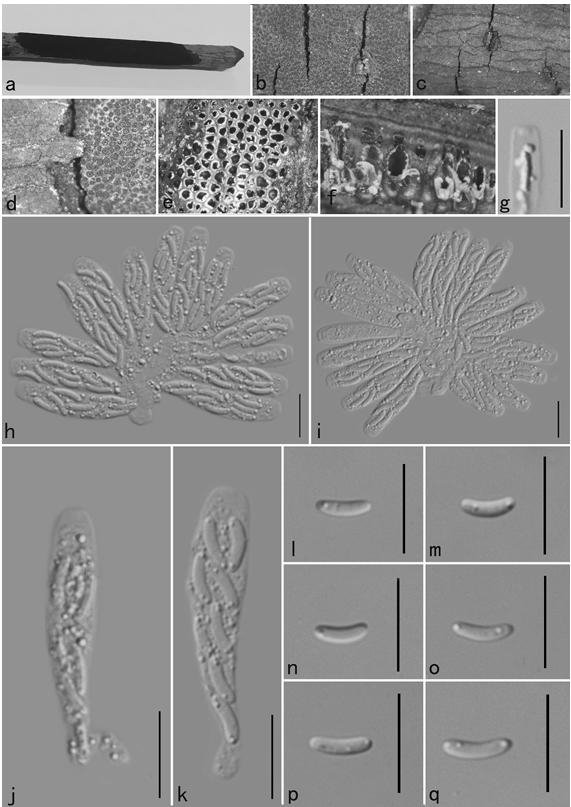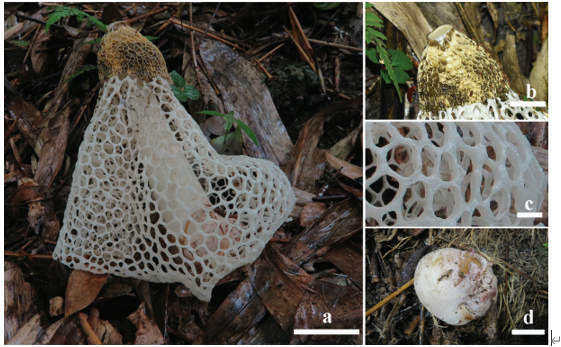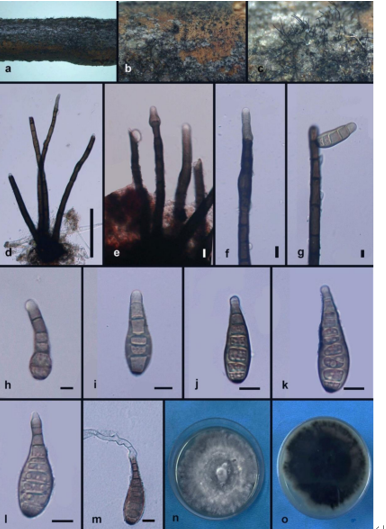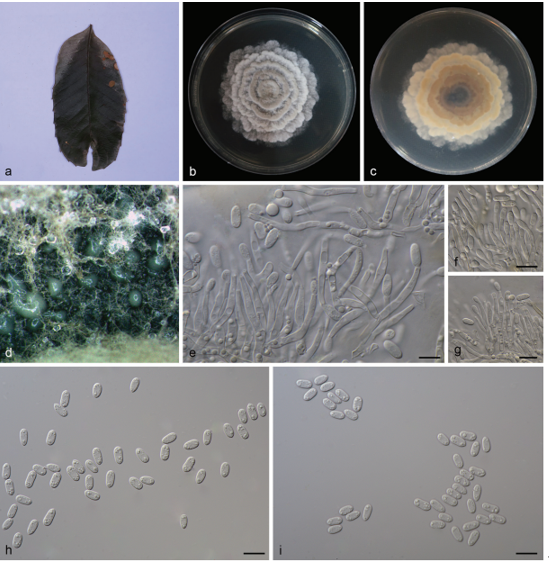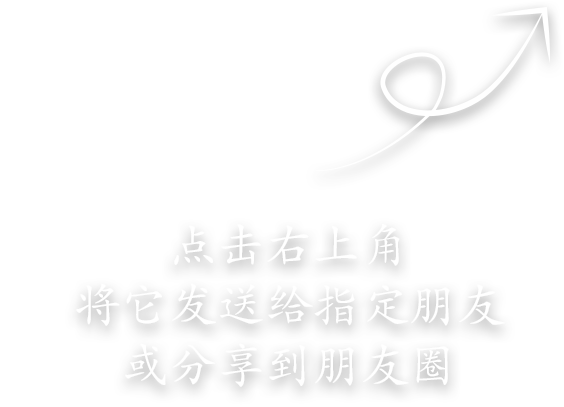Tomentella duplexa H.S. Yuan, X. Lu & Y.C. Dai 2020
Index Fungorum number: IF555462; Facesoffungi number: FoF 05615
Holotype: CHINA, Liaoning Province, Dalian, Zhuanghe County, Xianrendong, Bingyugou National Geopark, on rotten angiosperm wood debris, 5 August 2017, Yuan 12207 (IFP 019267, holotype), Yuan 12202 (IFP 019268).
Morphological description
Basidiocarps annual, resupinate, duplex, adherent to the substrate, pelliculose, without odour or taste when fresh, 0.6–1 mm thick, continuous. Hymenophoral surface smooth, greyish brown to brown (7D3–7E4) and slightly lighter than subiculum when dry. Sterile margin often indeterminate, farinaceous, concolorous with hymenophore. Rhizomorphs absent. Subicular hyphae monomitic; generative hyphae clamped and rarely simple septate, thick-walled, occasionally branched, 3–6 μm diam, without encrustation, pale brown in KOH, cyanophilous, inamyloid. Subhymenial hyphae clamped and rarely simple septate, thin-walled, occasionally branched, 5–8 μm diam; hyphal cells short and inflated, pale brown in KOH, acyanophilous, inamyloid. Cystidia absent. Basidia 20–45 μm long and 5–9 μm diam at apex, 3–5 μm at base, with a clamp connection at base, clavate, not stalked, sinuous, rarely with transverse septa, pale brown in KOH and in distilled water, 4-sterigmate; sterigmata 4–7 μm long and 1.5–2 μm diam at base. Basidiospores slightly thick-walled, (7–)7.5–8.5(–9.5) × (6.5–)7–8.5(–9) μm, L = 8.07 μm, W = 7.55 μm, Q = 1.03–1.08 (n = 60/2), globose to subglobose in frontal and lateral views, echinulate, pale brown in KOH and in distilled water, cyanophilous, inamyloid; echinuli usually isolated, up to 2.5 μm long.
Habitat: On rotten angiosperm wood debris.
Distribution: In China.
GenBank Accession: ITS: MK211707, MK211706; LSU: MK446358, MK446357.
Notes: Tomentella bresadolae (Brinkmann) Bourdot & Galzin and T. duplexa are closely related in the phylogeny (Fig. 111) and they share greyish brown to brown basidiocarps adherent to the substrate, globose to subglobose basidiospores, the absence of rhizomorphs and cystidia. However, T. bresadolae differs from T. duplexa by the stalked, utriform basidia and more or less uniform subhymenial hyphal cells (Wakefield 1960; Larsen 1969; Kõljalg 1996; Daemmrich 2006). T. griseofusca resembles T. duplexa by greyish brown to brown basidiocarps adherent to the substrate, short and inflated subhymenial hyphal cells, globose to subglobose basidiospores, and the absence of rhizomorphs and cystidia. But, T. griseofusca is differentiated by crustose basidiocarps with a byssoid sterile margin and utriform basidia.
Reference: Hai‑Sheng Yuan1,2· Xu Lu1,2 · Yu‑Cheng Dai3 ·
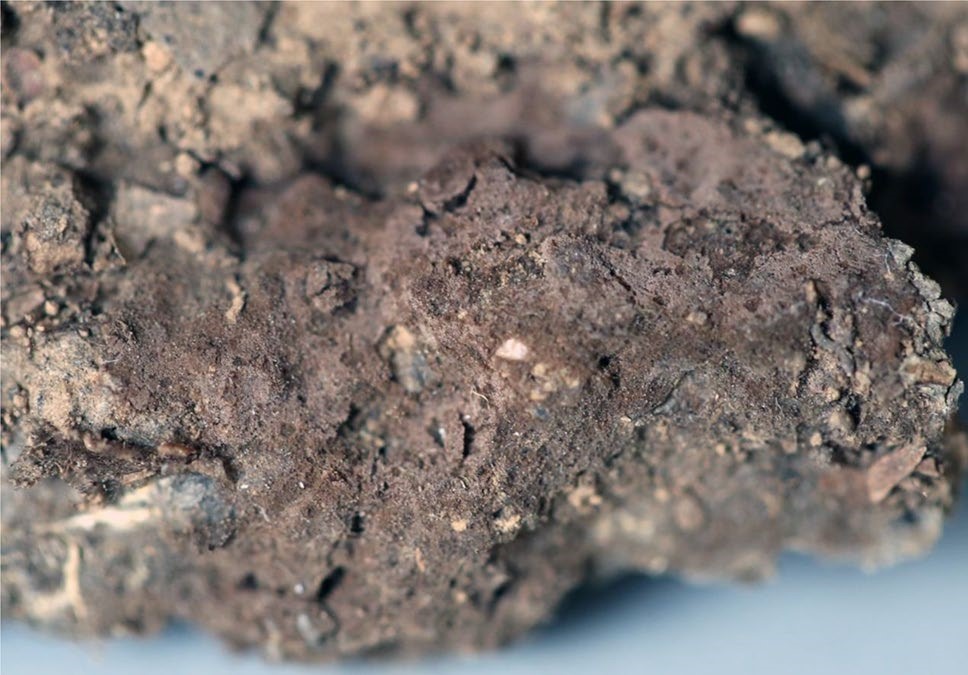
A basidiocarp of Tomentella duplexa (IFP 019267, holotype)


